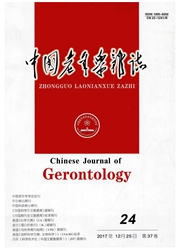

 中文摘要:
中文摘要:
目的探讨眼针治疗脑缺血再灌注损伤(CIRI)模型大鼠脑皮层组织中Toll样受体4(TLR4)及髓样分化因子88(My D88)的作用机制。方法健康雄性SPF级Wistar雄性大鼠60只,随机分为正常组、假手术组、CIRI模型组和眼针组。CIRI模型组和眼针组采用改良的线栓法建立大鼠大脑中动脉缺血再灌注(MACO)动物模型。酶联免疫吸附(ELISA)法检测大鼠血清白细胞介素(IL)-1β水平,Western印迹检测大鼠缺血侧脑皮层TLR4、My D88蛋白表达的变化。结果与正常组及假手术组比较,模型组大鼠血清IL-1β水平明显升高(P〈0.01),缺血侧脑皮层组织TLR4、My D88蛋白水平均显示高表达(P〈0.01);眼针组同模型组相比,血清IL-1β水平显著下降(P〈0.01),缺血侧脑皮层组织TLR4、My D88蛋白表达明显下调(P〈0.01)。结论眼针抑制脑皮层组织中TLR4、My D88的表达,降低炎症反应,可能是眼针治疗CIRI的主要作用机制之一。
 英文摘要:
英文摘要:
Objective To evaluate the expressions of TLR4 and My D88 in cerebral ischemia-reperfusion injury( CIRI) in rat brain cortex and the effect of eye acupuncture. Methods Adult male SPF Wistar male rats were randomly divided into normal,sham operation,CIRI model and eye acupuncture groups. The model of middle cerebral artery occlusion( MACO) was established by the improved suture method. ELISA method was performed to determine the IL-1β level,Western blot was performed to examine the protein expressions of TLR4 and My D88 in the ischemic brain cortex. Results The IL-1β level and protein expressions of TLR4 and My D88 in CIRI model group were increased significantly( P〈0. 01) compared with those in normal and sham operation groups,and which were decreased significantly( P〈0. 01) in eye acupuncture group. Conclusions Eye acupuncture therapy could reduce the IL-1β level and expressions of TLR4 and My D88 in CIRI,which might be the treatment mechanism of eye acupuncture therapy on CIRI rat.
 同期刊论文项目
同期刊论文项目
 同项目期刊论文
同项目期刊论文
 期刊信息
期刊信息
